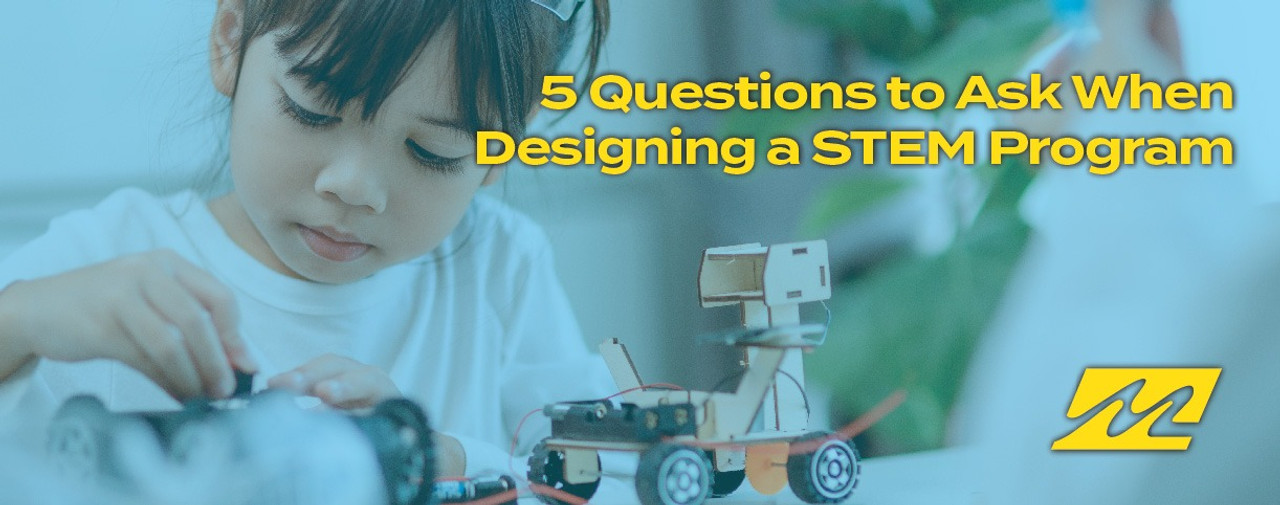Before you can start ordering STEM supplies and equipment for your school, you need to identify some basic information about the program features you’d like to offer. Even if you just want to slowly build up a program, it’s best to enter with a plan that allows for assessment and adjustment as you grow. Here are five questions to get you started when designing a STEM program at your school.
What’s the Goal?
The purpose of any educational endeavor is to prepare students for life after school with the knowledge and skills they’ll need in life and at work. However, different programs target different skills and knowledge areas. STEM is more than just science, technology, engineering, and math. Get more granular with the courses you want to offer. Try computer science for programming and coding, a robotics workshop, architecture courses, astronomy, environmental science, and more.
What Standards Will You Follow?
Depending on your program’s focus, you may want to align your curriculum with your state's STEM standards, or adopt focused standards such as NGSS or STEL for engineering, and CSTA’s K-12 CS standards for computer science. These programs will include specific instructional strategies to teach the content such as PBL, design thinking, challenge-based learning, computational thinking, and work-based experiences.
What’s the Budget?
Although you don’t need to have every penny accounted for, having a rough idea of what your budget looks like helps inform other decisions you’ll need to make when purchasing STEM products for schools. Keep in mind the curriculum, materials, learning space updates, training, and PD you’ll need for a successful program. Also consider the source of your budget. You may be using government funding, applying for grants or scholarships, or reaching out to the community for local support and fundraising.
Equipment, Materials, and Technology
A major concern for your learning spaces, and probably the biggest item in your budget, is the technology supplies you’ll use. You’ll have to consider laptops, tablets, robotics supplies, 3D printers, digital microscopes, podcasting kits, video production equipment, and other school tech supply items. Furthermore, you’ll need to decide how many devices you want to use, how many students will be using each device, and whether they are meant to reach across grade levels or focus on a single grade.
Learning Environment
One of the first decisions you’ll have to make when designing a STEM program is where the learning will take place. Some schools have one large room that all students share, while other schools designate certain classroom spaces for STEM activities. What’s right for you will depend on how many students you’ll have in the space at a time and what type of work they’ll be doing. Also keep in mind the space you’ll need for storage of equipment, materials, and supplies.
Start Designing Your STEM Program Today
Creating a STEM program for your school is a worthwhile investment. Not only is it beneficial for today’s students, but also for future generations as STEM concepts and skills become more prevalent in the workforce. If you have questions or would like to purchase STEM equipment and supplies for your classroom, please contact us online or give us a call at 1-800-831-5904 and our helpful staff will ensure you have everything you need for a successful STEM program.

